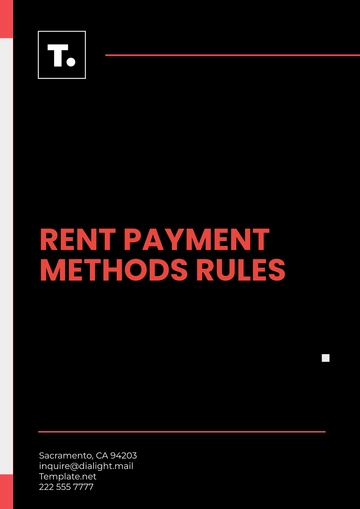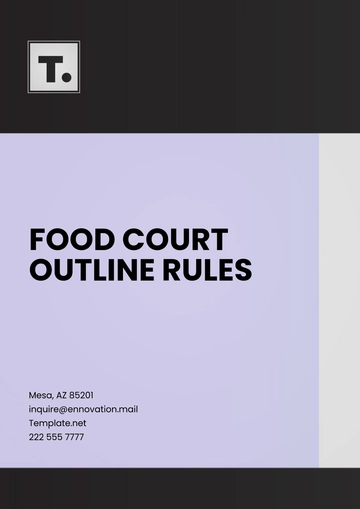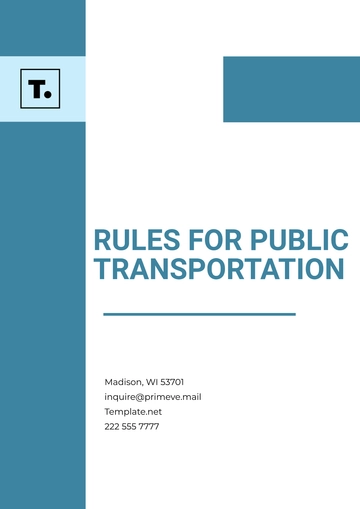Free Bullying Prevention Rules

1. Introduction
Bullying prevention is essential in creating safe and supportive environments in schools. It contributes to the overall development of children, promotes mental well-being, and cultivates a positive school culture. This framework outlines a comprehensive approach for preventing bullying within educational institutions.
2. Definition and Types of Bullying
2.1 Definition
Bullying refers to any form of unwanted aggressive behavior among school-aged children that involves a real or perceived power imbalance. The behavior is either repeated or has the potential to be repeated over time.
2.2 Types of Bullying
Bullying can be categorized into several types:
Physical Bullying: Involves harming a person's body or possessions.
Verbal bullying includes teasing, name-calling, inappropriate sexual comments, taunting, and threats.
Social Bullying: Aims to damage someone's reputation or relationships through exclusion, spreading rumors, or public embarrassment.
Cyberbullying: Occurs over digital platforms like cell phones, computers, and tablets, involving the dissemination of negative, harmful, false, or mean content.
3. Roles and Responsibilities
3.1 School Administrators
Develop and enforce anti-bullying policies.
Ensure regular training programs for staff and students.
Monitor and evaluate the effectiveness of bullying prevention initiatives.
3.2 Teachers and Staff
Foster a safe and respectful classroom environment.
Intervene promptly and consistently in response to bullying.
Encourage students to report bullying incidents and support both victims and perpetrators.
3.3 Students
Treat everyone with respect and kindness.
Report bullying incidents to a trusted adult or school authority.
Support peers who are being bullied.
4. Prevention Strategies
4.1 Awareness Programs
Conduct regular programs to educate students, staff, and parents about bullying's effects and the importance of prevention.
4.2 Peer Support Systems
Establish peer support systems, such as buddy programs and student councils, to build a supportive school community.
4.3 Counseling and Support Services
Provide access to counseling and mental health services for students affected by bullying, including victims, perpetrators, and witnesses.
4.4 Positive Behavior Interventions
Implement Positive Behavioral Interventions and Supports (PBIS) to encourage positive behavior and reduce negative actions.
5. Reporting and Response
5.1 Reporting Mechanisms
Create confidential and accessible reporting systems for students, staff, and parents to report bullying incidents.
5.2 Investigation Procedures
Establish clear procedures for investigating reported incidents, ensuring a fair and prompt response.
5.3 Disciplinary Actions
Define appropriate and consistent disciplinary actions for bullying, based on the severity and frequency of incidents.
6. Evaluation and Improvement
6.1 Regular Assessments
Conduct regular evaluations to assess the effectiveness of anti-bullying policies and programs.
6.2 Feedback Mechanisms
Implement systems for students, staff, and parents to provide feedback and suggestions for improving bullying prevention efforts.
7. Conclusion
Bullying prevention is an ongoing process that demands the commitment of the entire school community. By adopting comprehensive strategies and nurturing an environment of respect and support, schools can significantly reduce bullying incidents and enhance the well-being of all students.
- 100% Customizable, free editor
- Access 1 Million+ Templates, photo’s & graphics
- Download or share as a template
- Click and replace photos, graphics, text, backgrounds
- Resize, crop, AI write & more
- Access advanced editor
The bullying prevention rules template offered by Template.net is a must-have for creating a safe and respectful environment. This customizable, downloadable, and printable template ensures you have comprehensive rules in place. Easily editable in our AI Editor Tool, it allows for quick adjustments to fit your specific needs, making implementation seamless and effective.





























